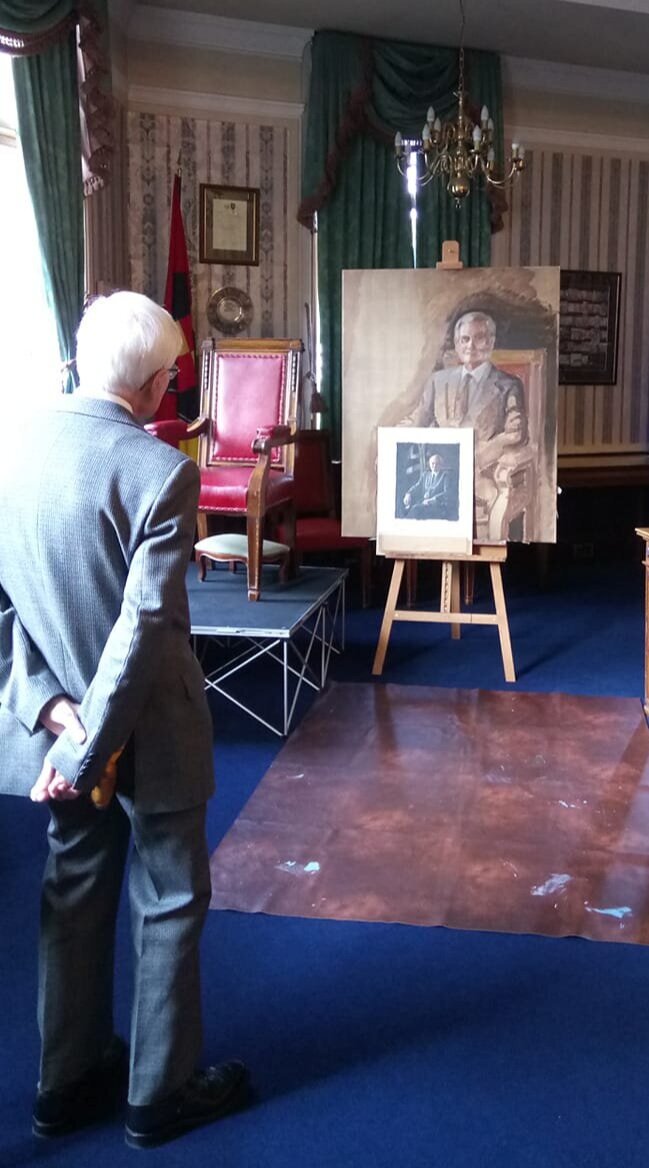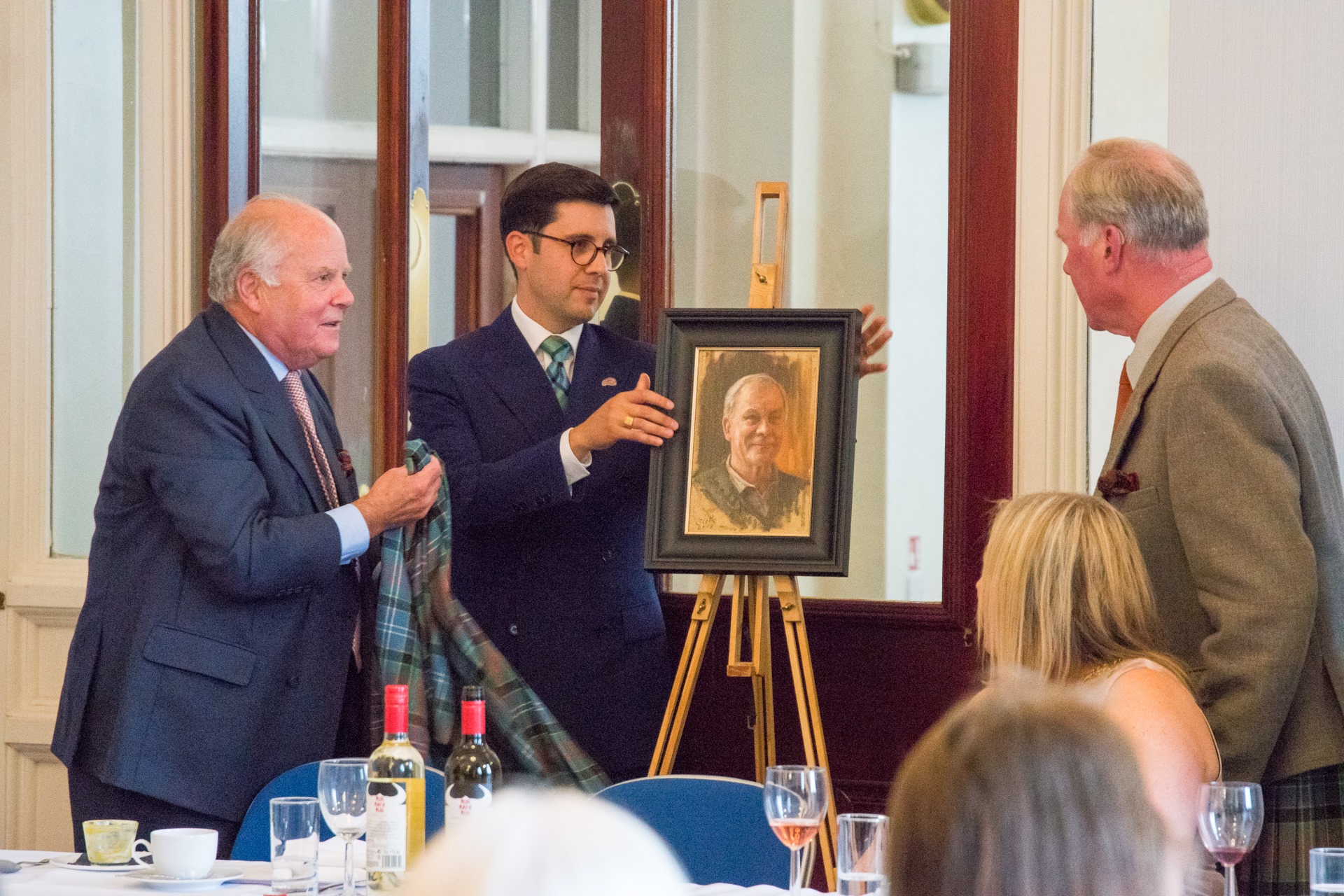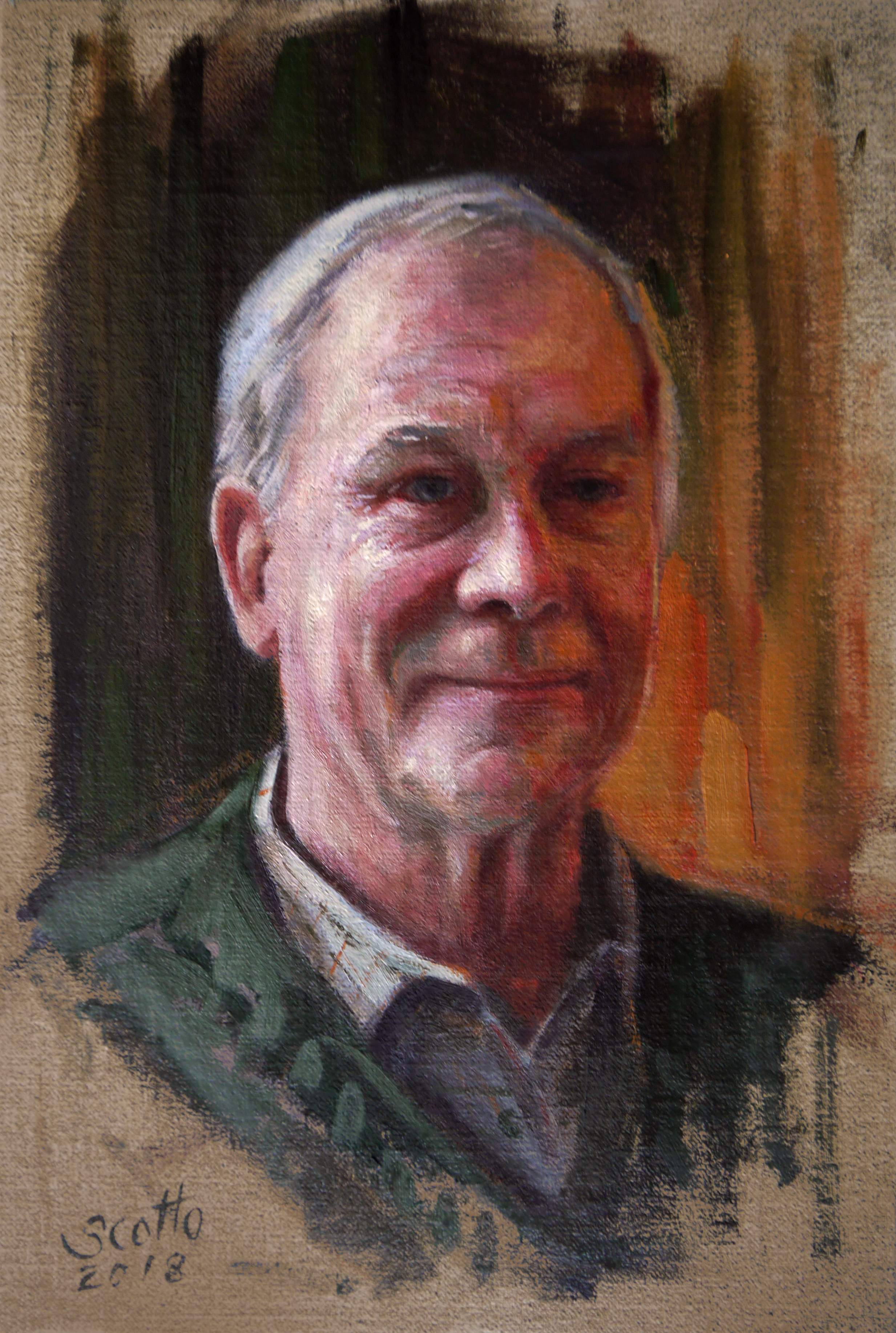On 18th March 2018 my portrait of Ruth Maltman TD DL was unveiled at the Trades Hall of Glasgow by the Lord Provost of Glasgow, Eva Bollander. Ruth Maltman is the first woman to be elected to the office of Deacon Convener since the incorporation of the Trades House in 1605.
The ceremony and speeches were full of sentiment and significance. In attendance were the Lord Provost - Eva Bollander, present Deacon Convener - Alastair Dorward, the Lord Dean of the Guild, the Lord Lyon King of Arms, and many Deacons and Visitors of the Trades House as well as guests.
May I take this opportunity to thank the Trades House of Glasgow for their trust and for the great honour I was given to record with my brush a significant moment in the history of Glasgow, a city I am connected to by the strongest family ties, a city which rests at the core of my heart.
I was touched by Ruth’s speech, as she conveyed her thoughts on the process of painting and my work. The essence of her speech is transcribed below.
“Can I start off by saying how very pleased and impressed I am with Max’s portrait… ‘pleased and impressed’ is maybe not how I expected to feel, when my colleagues first told me there was to be a portrait. But then I think anyone would have to have great self-confidence to immediately welcome a stranger rendering their face on such a scale!
But I could always see the point of this picture – Trades House needs to continue to record its own history and this picture really does mark that major change in the organisation that after some 400 years, women can fully participate…
In the beginning of this commission I was quite sorry for Max, our artist. We chose him because we thought he would be able to meet the brief – and it was a tough brief. His picture had to blend in with the other portraits we had, in both size and general style. It had to show the Deacon Convener’s chain, in all its complicated Victorian glory, and it had to include our historic Deacon Convener’s chair, both in some detail. And just to make his life complete, we also asked Max to include the Adam fireplace (in the saloon next door) and some flowers.
Max accepted our commission and approached it with great enthusiasm and professionalism. He measured... He told us how long it should take and why... He gave us a few options... and then the paints came out. I sat for him several times, and it was a window into a new world for me to see how fastidious Max is with his paints and brushes, and how he built up layer after layer of paint on the canvas to get the effect he wanted – or removed it because it didn’t entirely satisfy him. We chatted away and I learned a great deal from him about portraits, about oil paints, about varnishes and even about picture frames.
Now the completed picture is in front of me, I am delighted with it. Max did more than he promised; he captured everything we had asked for in terrific detail, and I am confident that Trades House members and visitors today and in the future will enjoy it. So thank you for your work Max; I greatly appreciate what you have given us, and I really enjoyed sitting for it”.

















